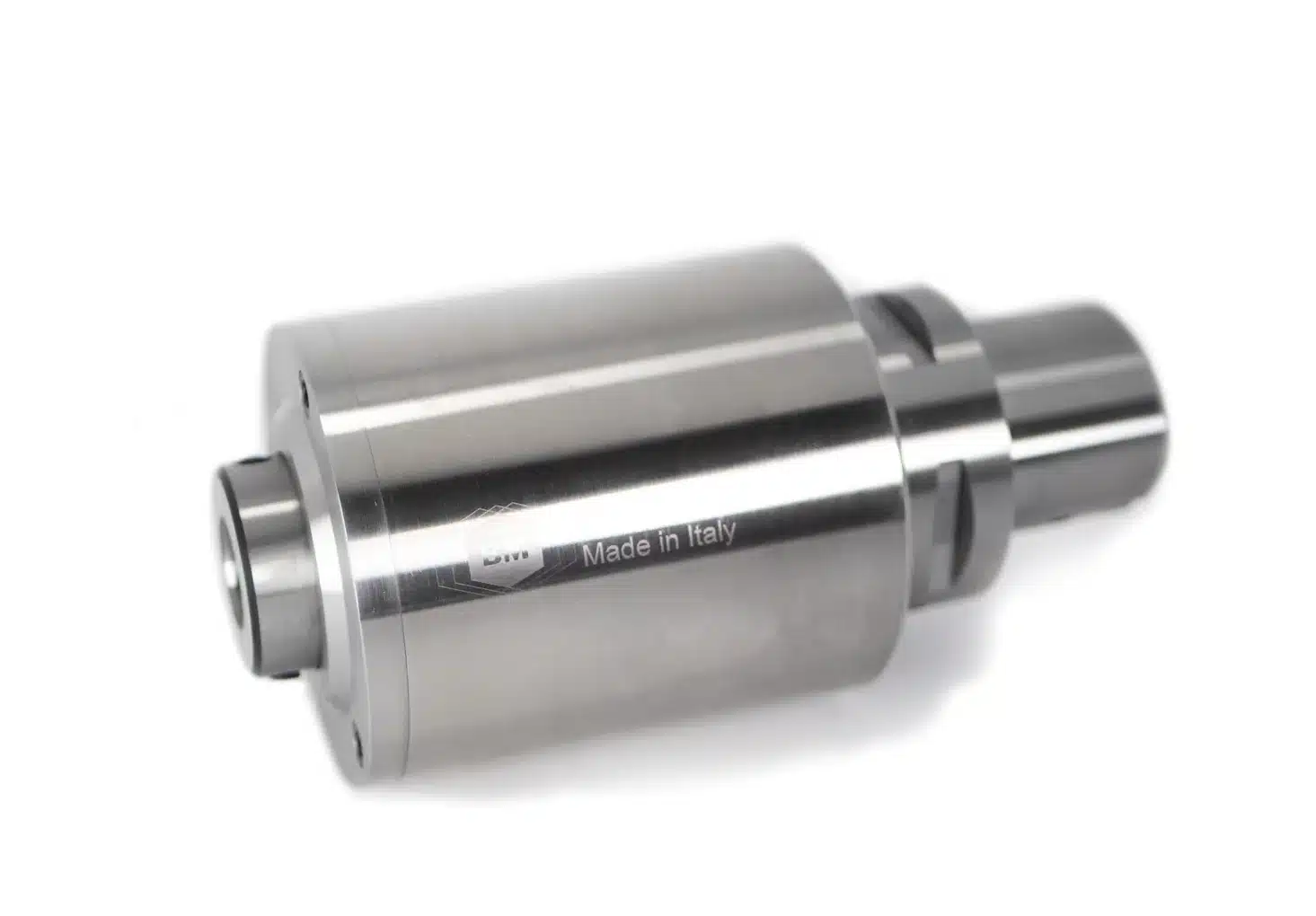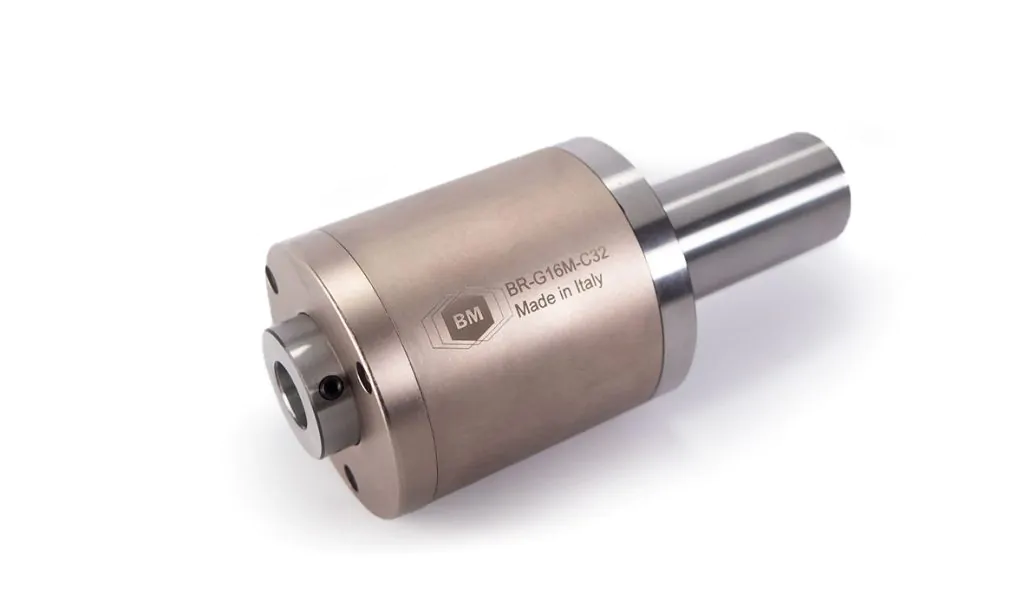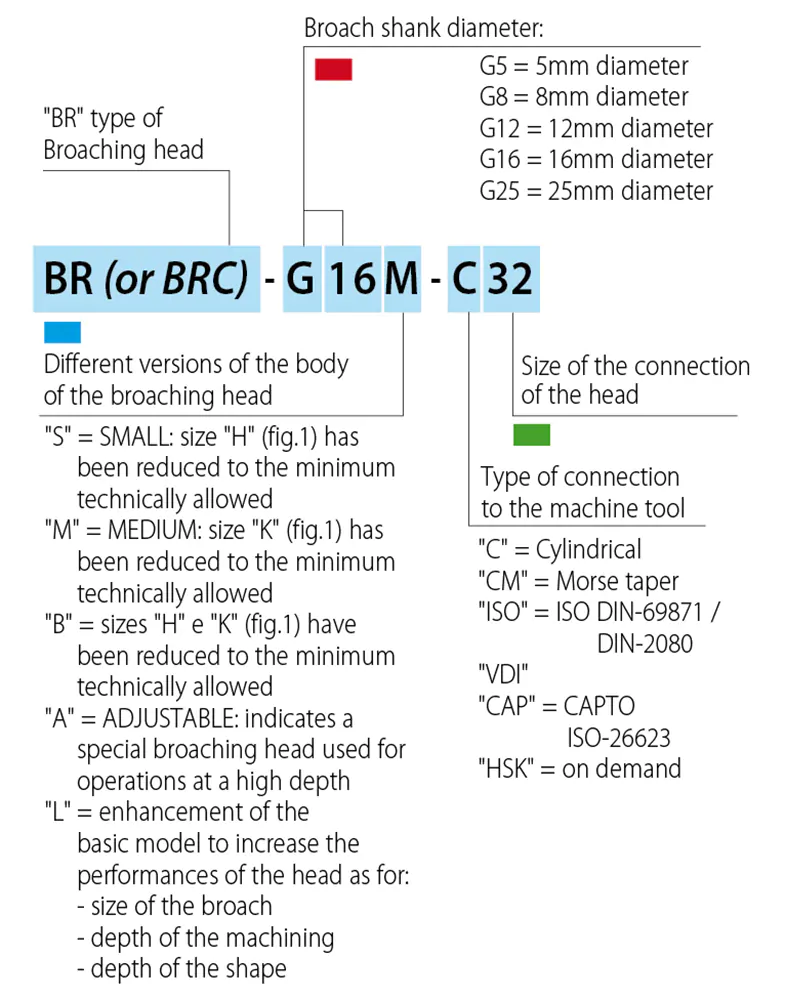Broaching Heads
Broaching heads with internal flow of coolant
(BRC Series)
Standard fixed Broaching heads
(BR Series)
Adjustable Broaching heads
(BR Series)
The Broaching head is a high-speed tool for forming blind or through holes with regular polygonal shapes (square, hexagonal, TORX®, spline, etc.). Installing an adaptor on the same broaching head, polygonal surface profiles can be realized.
In addition, with the help of the adapter, external profiles with a regular cross-section can be made on the same Broaching.
The broach seat is set in the tool body at a specific inclination so that, when the machine rod starts to rotate, it transmits both, a rotary and oscillating motion to the broach. The combined action deriving from the rotation and feed function provided by the machine, allows the broach to smoothly penetrate the pre-drilled work-piece, in order to form the shape required.







The body of the broaching head is made of tempered steel. The ball bearings sustaining the machining effort are placed inside the body of the broaching head.
The spindle holding the broach is placed inside the body of the braoching head and turns on the ball bearings. In its outer part there is a screw used to fasten the broach and a threaded hole to install the drawrod.
It is a housing inside the spindle of the broaching head, in which the broach is installed. This housing is properly realized and grinded in order to suit with great precision the shank of the broach.
At the opposite side of the body of the broaching head from the spindle there is the connection to the machine tool. The broaching head is available with several kind of connections in order to be installed on a wide range of machine tools:
- Cylindrical connection
- Morse taper connection
- ISO-DIN 69871 / DIN 2080 connection
- VDI connection
- CAPTO ISO-26623 connection
It is a little steel bar supplied together with the broaching head and it is to be installed in the special threaded hole on the spindle of the broaching head. It has the purpose to avoid the machining of twisted shapes and it guarantees a particular orientation of the shape in the work piece.
If the machine used is a lathe the drawrod must be fixed on the fork of the spindle of the lathe itself, while if the machine used is a milling machine or a drill the drawrod must be fixed on a bar fastened to the working desk.




